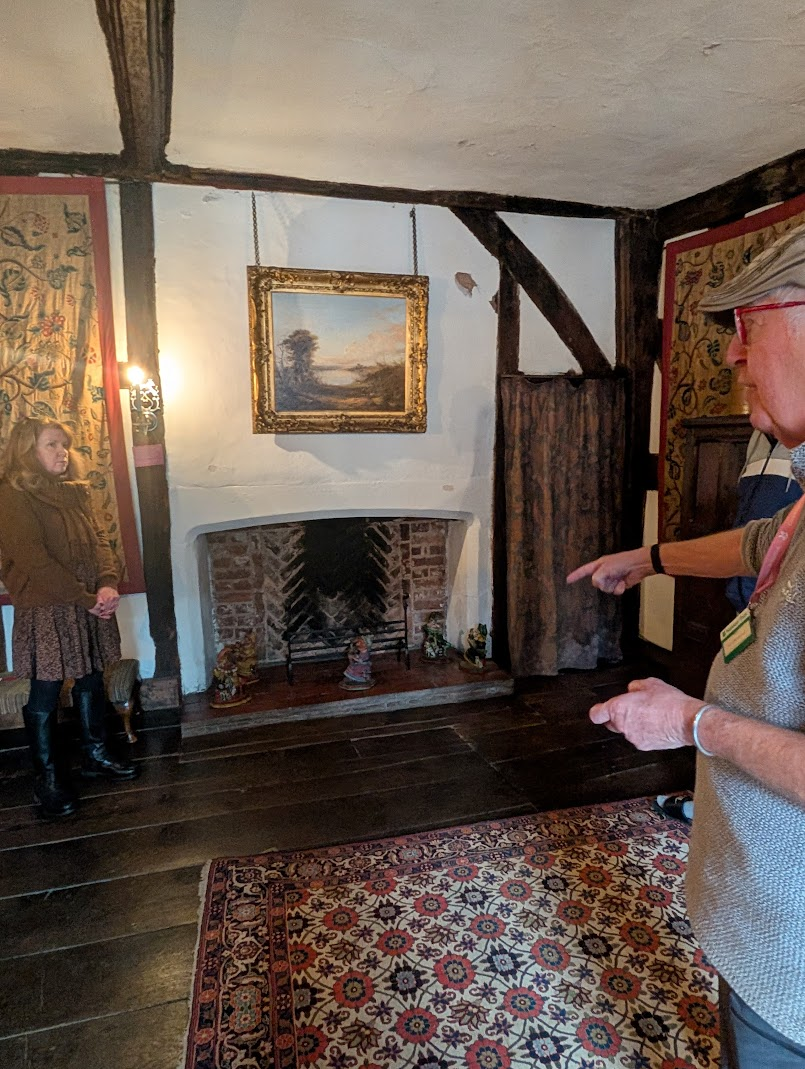Greyfriars House and Garden
- chirp54
- 3 days ago
- 3 min read
As an American I'm always amazed that I can visit buildings in the UK that were built centuries before my country was founded. Buildings this old are all over the country and many are managed by the National Trust. One such is Greyfriars House and Garden in Worcester.

Greyfriars was built around 1490 by a wealthy merchant and was a home to wealthy families until the late 17th century. In 1699 a baker purchased the lease and divided the house into two. It then became a mixture of homes, shops and businesses for the next 200 years. Trade varied and included leather goods, hats, bread and umbrellas, and for a brief time it housed a kiddlywink called the Old Oak Tavern. (A kiddlywink was a tavern that sold beer and cider, but not hard liquor.)

Over the years, extensions have been added and its interior altered to accommodate the many families and individuals who've resided here. In the early 19th century, ten cottages were constructed in the back garden.
By the 1930s, however, fortunes had declined and Greyfriars was faced with demolition. It was only the start of the WWII that saved it from demolition because attention and resources had shifted to defense. Fortunately, the house was rescued and carefully restored in the mid-20th century by a handful of dedicated individuals, most notably by siblings Elsie and Matley Moore who put their own resources into it, with the proviso that they be allowed to live there. Greyfriars, as it now stands, is filled with the collections of Elsie and Matley.
In light of all the alterations that were made to the building over its lifetime, it's remarkable that so many of its original features remain. These are especially evident in Matley Moore's bedroom. The 18th century wood panels were removed from the walls and the original fireplace with its herringbone brickwork is original as are the wide floorboards.


Tapestry and embroidery were the interests of Elsie Moore. She rescued many old embroidered panels, reinforced and repaired them as necessary, and used them all over the house.
Our guide told us that this was the first house in Worcester that would have had a ceiling on its upper floor. Usually domestic dwellings were heated by a central hearth with no chimney and rooms were open to the rafters to allow smoke to rise and dissipate.
This was the parlor where Elsie and Matley would sit in the evening and read. It retains the 18th century wood panels.

The Chinoiserie style screen dates to 1767 and was restored by Elsie.

She was responsible for much of the work done to the house but because she was a woman, it was Matley who received most of the accolades.
The two shared a library: his books on one side, hers on the other.

The hall was divided into several rooms and opened to the street for trading in the 1700s. In the Hall there ae a number of storage chests. Most are highly decorated but one is plain.

It's a 15th century oak chest, thought to be one of the oldest pieces of furniture at Greyfriars.
Chests such as this one were common in the medieval period. They were able to store valuables and goods while at the same time as acting as furniture. They were also sometimes used as luggage when travelling.

There's a stunning four-fold screen made with reclaimed bits of an embossed leather wall hanging from the early 17th century. Elsie Moore found the material in a dumpster (skip) outside of an old house near Worcester Cathedral that was undergoing renovation.

When the houses in the back garden were pulled down in the 1950s, Matley and Elsie set about designing an Italianate garden.

They repurposed everything they could find, using roof tiles to make the steps leading from the house

and constructing a fountain from a discarded fireplace.

They were the original proponents of reduce, reuse, recycle.
This is a photo of Matley receiving the Civic Trust Award for the restoration of Greyfriars.

Our guide thought that the resentment he sees in Elsie's eyes was justified. I'd have to agree.



Comments